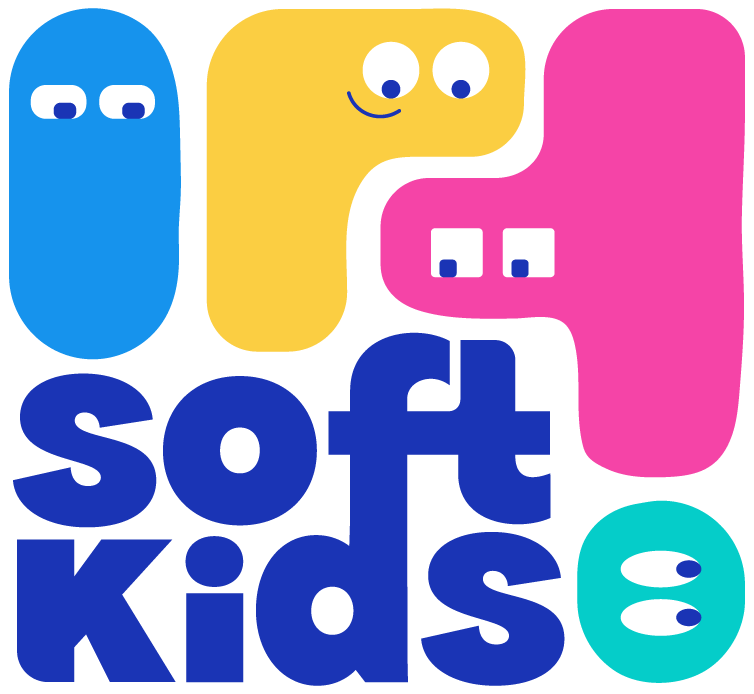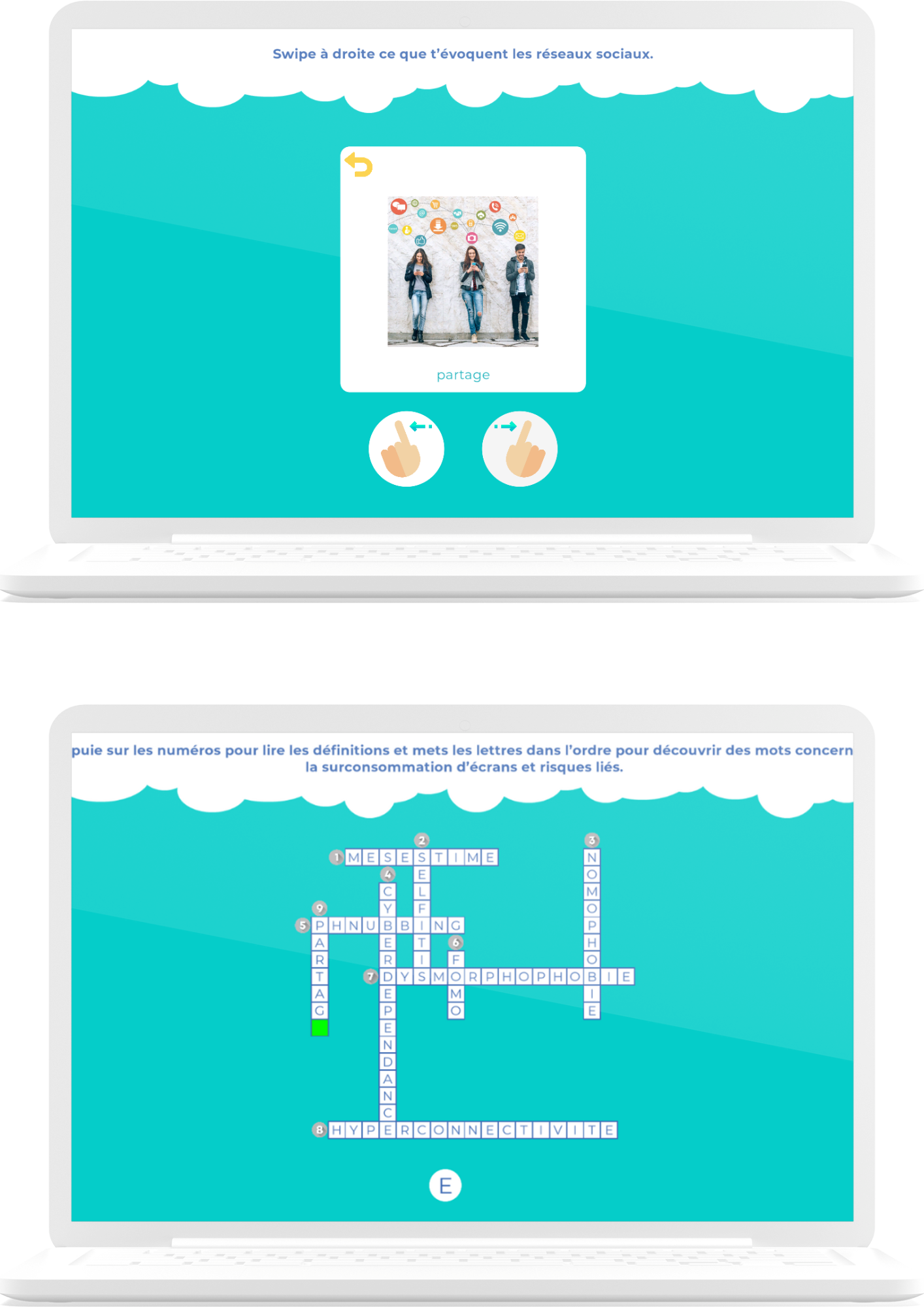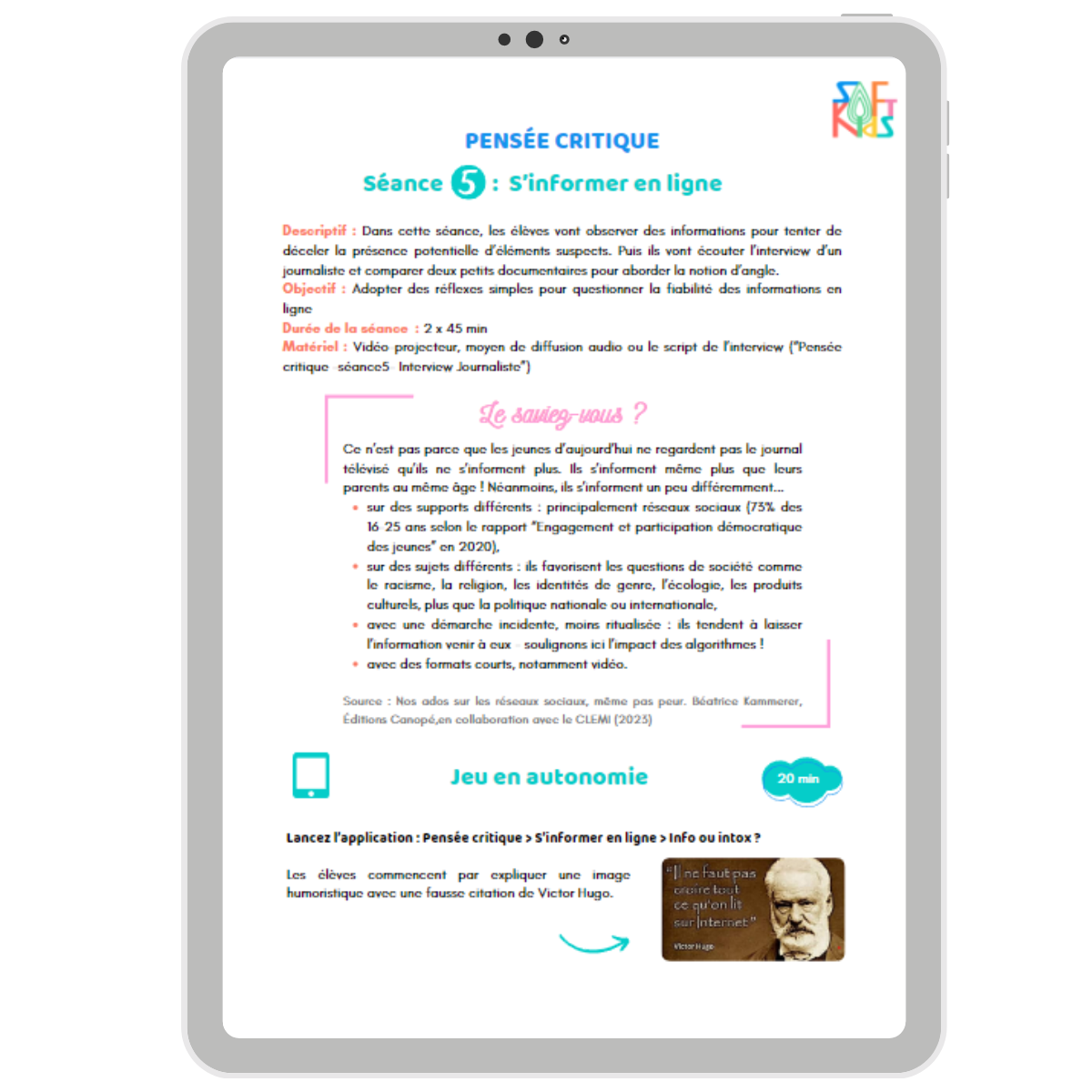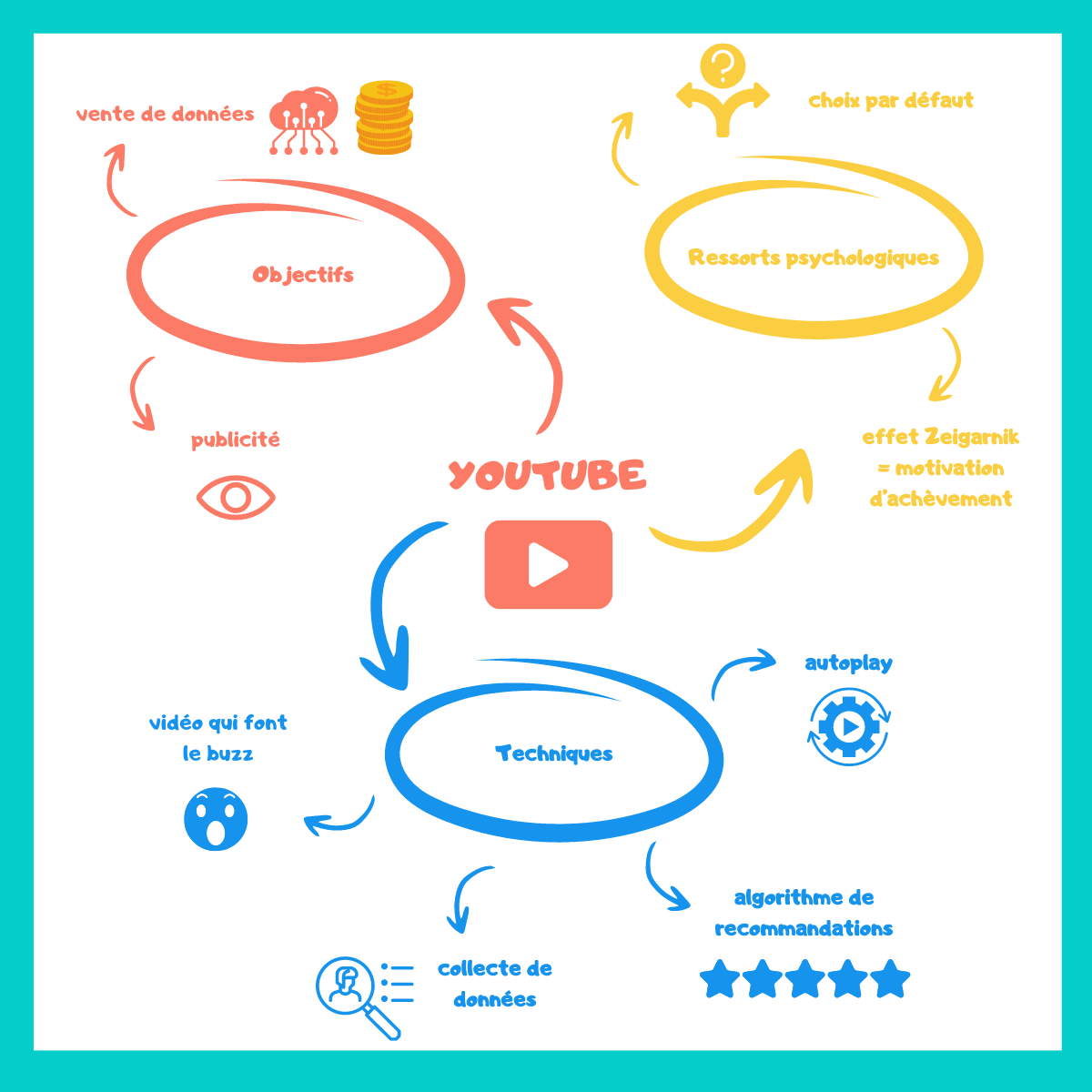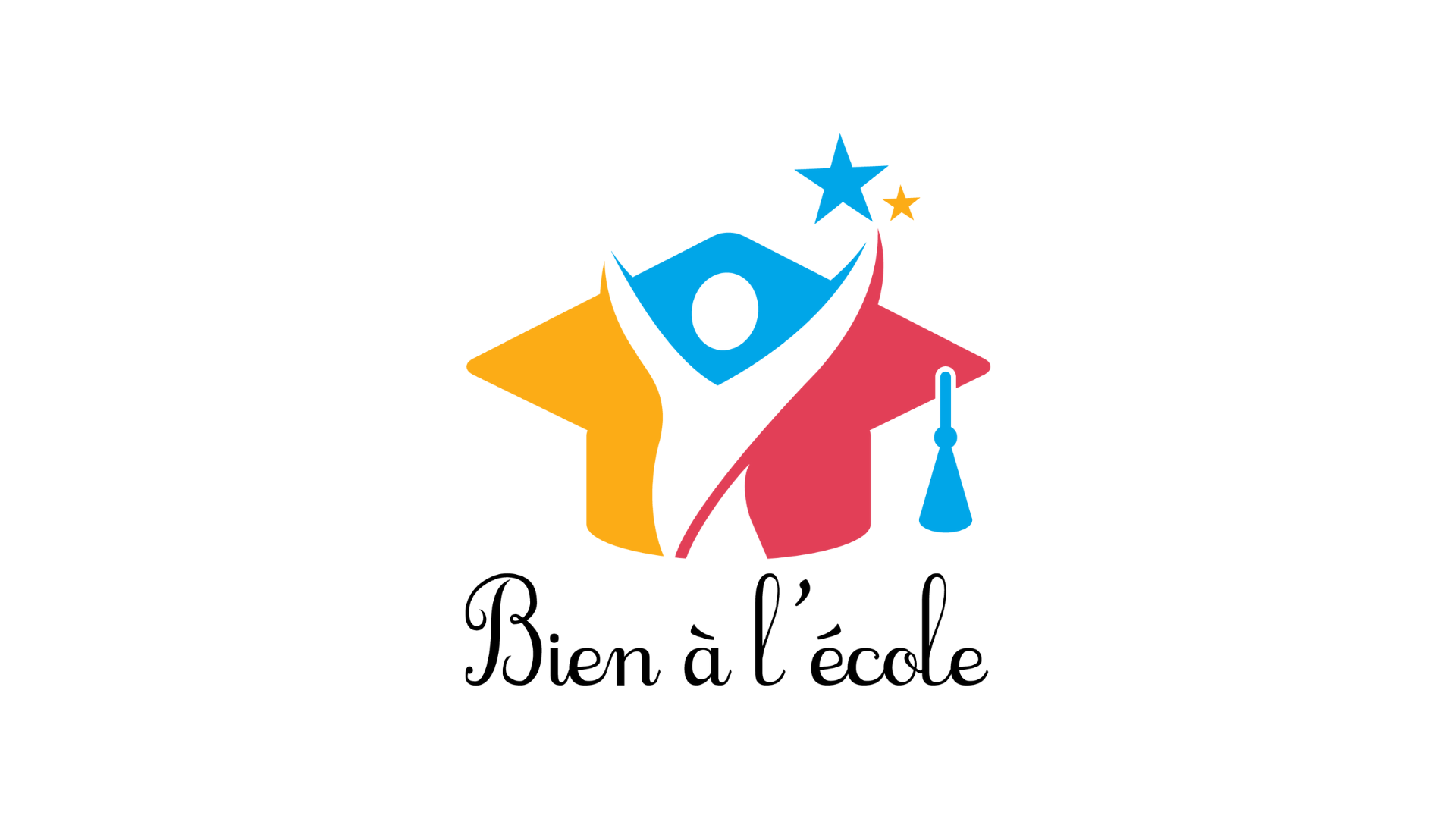PROGRAMME critical thinking - EMI CYCLE 4
EMI - Media and Information Literacy
In a society marked by an abundance of digital information and tools, students must learn to become Internet users who understand their rights, duties and digital identity, and to think critically about the reliability and relevance of information.
What do the national education programs say?
Media and information literacy is not an academic subject with a dedicated time slot. It must be present in all areas of knowledge transmitted to students. That's why all teachers, including documentalist teachers, participate collectively in the teaching of EMI, and ensure that the teaching provided in cycle 4 ensures that every student :
- an initial critical knowledge of the 21st century information and documentation environment;
- a progressive mastery of the information and documentation process;
- access to safe, legal and ethical use of digital publication and distribution tools.
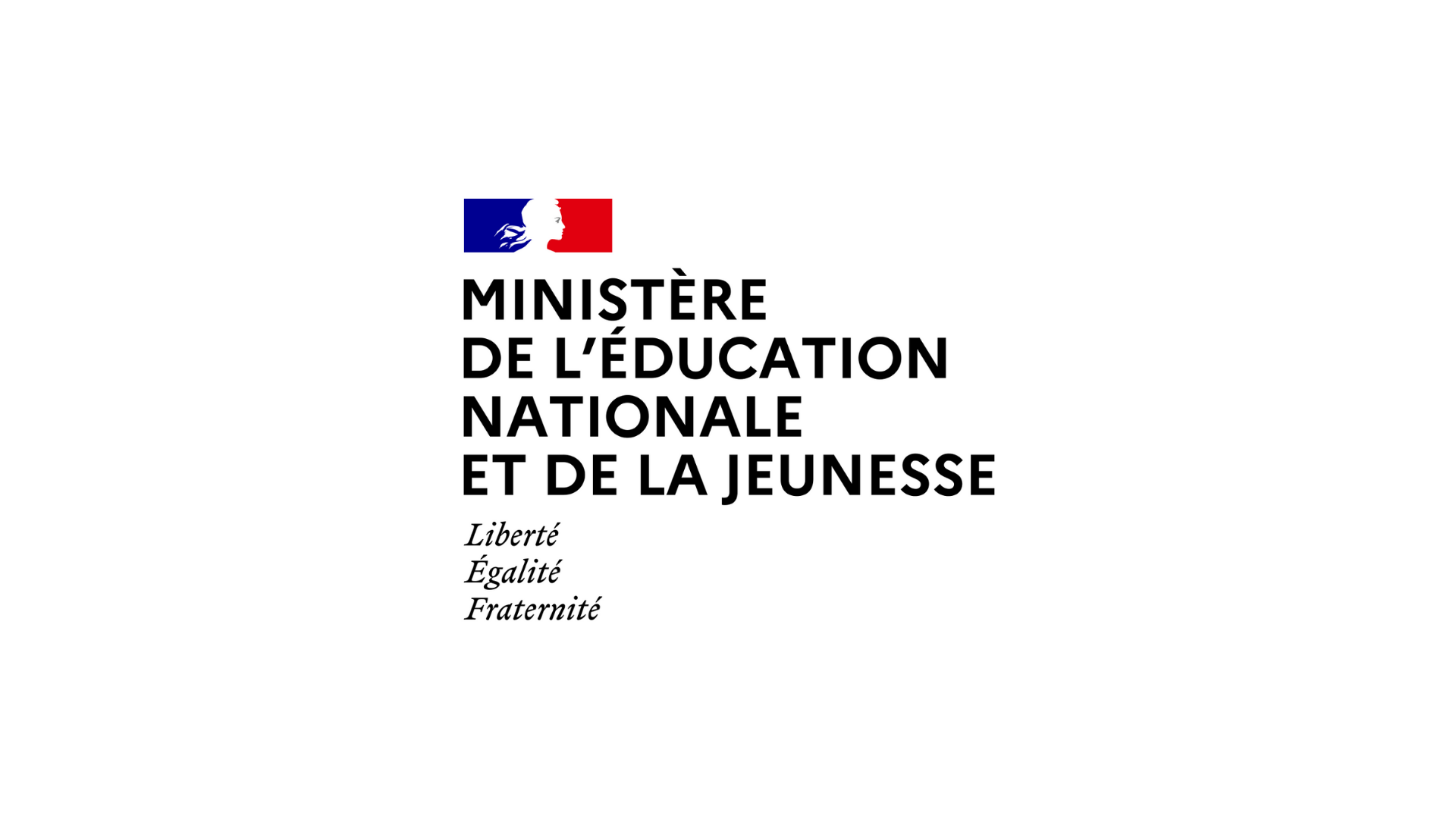

OUR program objectives "critical thinking
Our critical thinking program, centered on IME, addresses the following objectives:
- Becoming aware of the addictive mechanisms of social networks
- Controlling your use of screens
- Understand the challenges of collecting personal data and the potential pitfalls of digital marketing
- Reflect on your relationship with images and screens, and distance yourself from beauty canons to accept your own body and respect that of others.
- Adopt simple reflexes to identify fake news
The program in detail
Session 1:
To begin with, teenagers will self-evaluate their use of social networks. Next, they'll discover how the reward circuit works, and some of the techniques used by designers of digital tools. Finally, they will work in small groups to build mindmaps based on videos of different social networks.
Session 2:
First, students will discover the risks associated with over-consumption of screens with a crossword puzzle, followed by best practices in a matching game. Next, they'll take part in a debate about video games. Finally, they'll make decisions about their digital habits.
Session 3:
Students will explore the "free" nature of social networking: they'll discover advertising techniques in a Drag & Drop game, then the risks involved in collecting personal data and usingalgorithms with a quiz. Finally, they'll sharpen their critical thinking skills by conducting further research.
Session 4:
The aim of this session is to explore the relationship between images on screens. Two matching games will make students aware of the diversity of beauty canons across time and around the world. A group activity will then be proposed, either to extend this questioning of beauty standards using works of art, or to question certain online behaviors.
Session 5:
In this session, students will observe news items in an attempt to identify potential fake news. They will also listen to an interview with a journalist and compare two short documentaries to explore the notion of angle.
Session 6:
To bring the critical thinking program to a close, the class takes stock of what they've learned in the IME and completes a gap-fill text.
Our edutainment approach
Our approach combines independent games on tablet/computer and classroom activities.
Why use digital technology to work on CPS?
A variety of games enable students to reflect on themselves and discover best practices in concrete, everyday situations.
Ergonomics and easy-to-understand instructions encourage intuitive use by students: sorting games, drag & drop, MCQs, mazes, sophrology, etc.
Then a class activity is proposed. This could be, for example :
> a collective exchange or debate to develop opinions
> a role-playing game to put into practice what has been learned
> a small-group activity to consolidate what has been learned and learn to collaborate
> an artistic activity to develop creativity
> an activity to formalize what has been learned, such as application exercises or the creation of a written record.
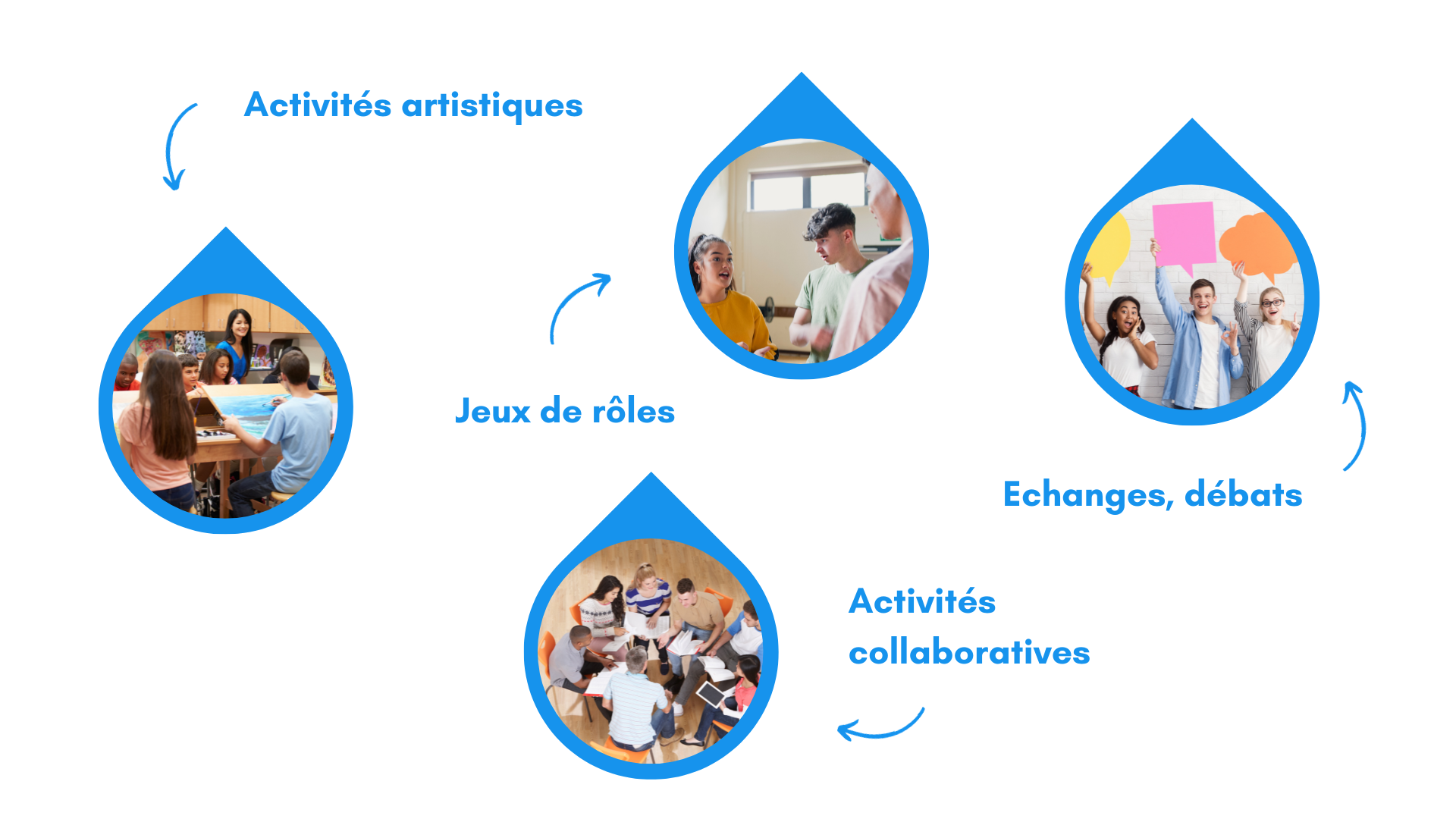
A turnkey tool
In your teacher interface, you will have access to all the resources you need to implement the session:
- student tracking charts
- step-by-step teaching guides for easy-to-use sessions
- student materials to be projected or photocopied
- a proposed yearly progression and references to official programs
- instructions for use
To sum up:
In short, the CRITICAL THINKING middle school program, dedicated to EMI, will help your students better understand how the digital tools they use work, so that they can make reasoned use of them and better detect fake news.
